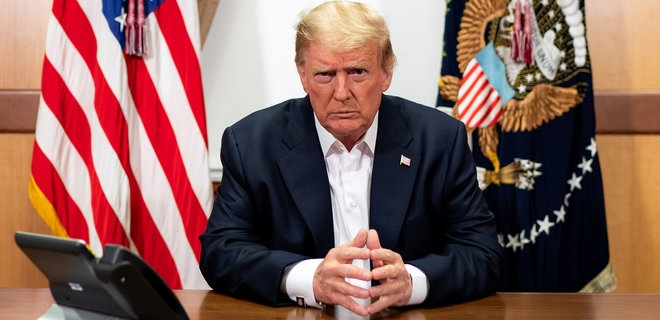Will April 2nd be "America's Liberation Day" and what to expect from Trump's imposition of tariffs?

President Trump plans to announce a large-scale tariff reform on April 2, which will become not only a source of revenue and geopolitical leverage, but also the largest intervention in the US economy in the last century, which will change the architecture of world trade. The format of the reform is still unknown, but panic is growing in the markets, and experts are talking about the threat of stagflation in the US, a global recession and the world's distrust of the US as a reliable partner. Forbes Ukraine analyzes the opinions of Bloomberg, The Wall Street Journal and the Financial Times on this issue.
Trump himself calls April 2 "America's Liberation Day" and says that the decision on tariffs has already been made, although there is still no understanding of the format of the reform in Washington. WSJ writes about internal disputes in Trump's team: some advisers support the idea of a 20% tariff on all imports, while others believe it is necessary to hold negotiations with each country separately.
The last time the US carried out a similar reform was in the 1930s through the Smoot-Gawley Act, but now the rates are much higher, as the volume of US imports is now three times greater than in 1930, and amounts to more than 14% of GDP, Bloomberg notes.
Although Trump formally declares the need to "restore justice," in reality his team is trying to combine the protectionist slogans of his campaign, budget deficits, and new tax breaks into one package, the WSJ comments.
The US economy has already reacted negatively to the idea of tariffs: key consumer confidence indices – from the University of Michigan and the Conference Board – have fallen sharply, chaos reigns in the energy sector, and inflation has begun to rise.
The new tariffs will increase inflation, the FT notes. For example, a 10% tariff on goods from China came into effect on February 4, and import prices for Chinese goods before the tariffs were imposed in February rose by 0.5%, half of the total increase in 2024. Chinese sellers did not lower prices, as Trump expected, but instead raised them, taking advantage of the opportunity.
The White House expects the tariffs to add $700 billion to the budget and offset some of the costs of Trump's tax breaks, including the elimination of the tip tax and a cut in the income tax, the WSJ reports. But experts warn that changing tariffs based on the progress of negotiations with individual countries will make long-term budget planning impossible and turn into an instrument of political pressure devoid of stability.
Tariffs have already been imposed on steel, copper, pharmaceuticals, goods from Canada and Mexico that do not meet the new USMCA requirements. A 20% tariff has been imposed on China for “insufficient control over fentanyl.”
The new tariffs will not only affect the US. Canada, the EU, and countries in Asia and Latin America are already preparing mirror tariffs that will reduce exports from the US. The average US tariff could be 28%, which would reduce GDP by 4% (this is the equivalent of $1 trillion and the economy of the state of Pennsylvania).
American CEOs are very worried and trying to adapt to new realities. For example, Tesla warns of risks to competitiveness, DataDocks - about a 35% drop in bookings in April and an almost complete lack of demand for the summer, which was last observed only during COVID, - writes Bloomberg.
Economists at Goldman Sachs, JPMorgan and other major investment companies have lowered their forecasts for US economic growth, the S&P 500 index has fallen sharply, the Japanese Nikkei 225 has fallen by about 4%, the first quarter of US stocks has been the worst since 2009, and the trade uncertainty index has reached a historic high.
The new tariffs look like a new type of globalization – without universal rules, with the priority of force over law. There will be no more GATT and WTO, and each country will have its own rules, the consequences of which will be the escalation of protectionism, rising prices, falling productivity.
In the future, the world expects a new architecture of global trade, which will be shaped not by the WTO, but by the political will of major economies.


